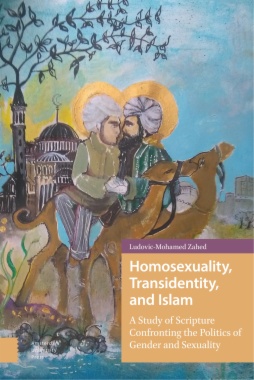-- With a foreword from Jan Jaap de Ruiter. Translation and Afterword by Adi S. Bharat. --In Homosexuality, Transidentity, and Islam: A Study of Scripture Confronting the Politics of Gender and Sexuality, Ludovic-Mohamed Zahed systematically analyses the entirety of Islamic scriptural sources that relate to the question of gender and sexuality in relation to their historical contexts. Through an approach that is certainly more politically engaged than that of most Islamic thinkers of our time, he clarifies key theological concepts that may seem esoteric to the uninitiated. In doing so, he makes a compelling case for the compatibility of sexual and gender diversity within Islam. Zahed also examines the historical and contemporary socio-political impacts of inclusive and exclusive (or, quite simply, homophobic, transphobic, and misogynistic) interpretations of scripture. This important study dynamically examines the connections between scripture, interpretation, and the politics of gender and sexuality.
- Cover
- Table of Contents
- Acknowledgments
- Foreword
- Introduction
- I. The Qur’anic Ethics of “Nature”: Gender, Sexuality, and Diversity
- 1a. Human Nature: Mirroring the Will of God
- 1b. Condemnation of “Immoral” Practices
- II. Distressing Qur’anic Verses?
- 2a. The Original Sodomy: Forbidding Ritual Rape
- 2b. The Absence of Female Homosexuality in the Qur’an
- 2c. Positive Representations of Gender Minorities in the Qur’an
- III. The Prophet: A Living Incarnation of Qur’anic Ethics
- 3a. Was the Prophet Homophobic and Transphobic?
- 3b. The Status of Mukhannathun: “Effeminate,” Trans, or Gay?
- 3c. The First “Sodomite”: Neither Gay nor Trans, but a Rapist
- IV. Islamic Apocrypha Advocating the Stoning of “Sodomites”
- 4a. The Sectarian Ideology of Fatwas Associating “Sodomy” with Apostasy
- 4b. A Former Mukhannath’s Internalized Homophobia and Misogyny
- 4c. What the Different Islamic Schools of Thought Advocate
- V. Postcolonial Orientalisms
- VI. “Abnormals”: From Cultural Diversity to Dogmatic Uniformity
- VII. Towards a Structural Reevaluation of Cultural Values
- VIII. Pan-Arabist Literary and Identity Censorship
- IX. Orientalist Shi’ism and Literary Homoeroticism
- X. Homonationalism and Performative Sexual Categorization
- XI. A “Crisis” of Categories, Geopolitics or Civilization
- Conclusion
- Afterword
- Bibliography
- Index
- List of Figures
- Figure 1 Hadith classification
- Figure 2 Chains of narration of apocryphal hadiths concerning mukhannathun
- Figure 3 Chains of narration of apocryphal hadiths condemning ‘sodomites’
- Figure 4 Apocryphal hadiths concerning the execution or stoning of ‘sodomites’

